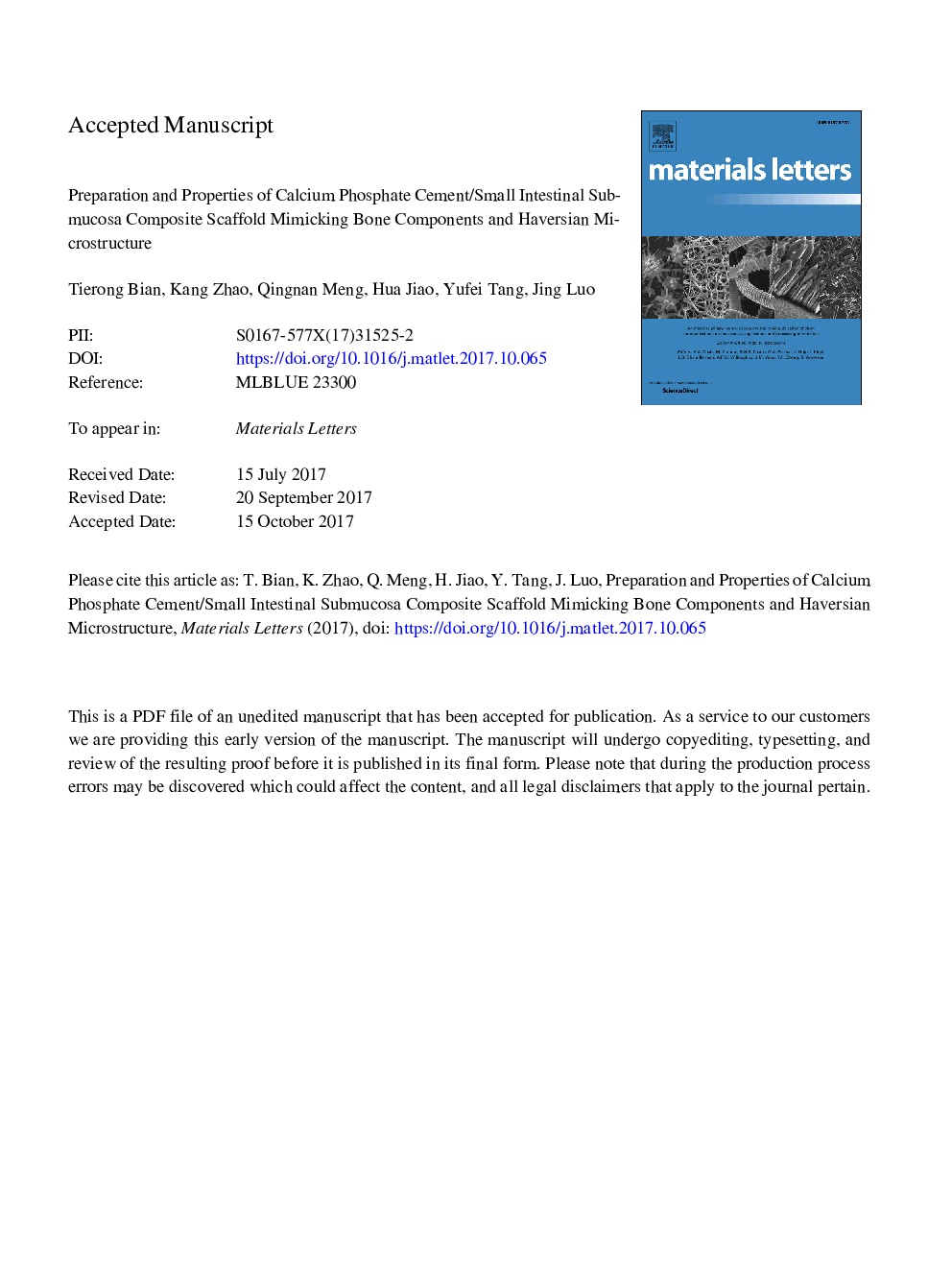| Article ID | Journal | Published Year | Pages | File Type |
|---|---|---|---|---|
| 8015544 | Materials Letters | 2018 | 10 Pages |
Abstract
Calcium phosphate cement (CPC)/small intestinal submucosa (SIS) composite scaffold was prepared in this work by subtly stacking bio-inspired Haversian motifs (lamellar cylindrical motifs), which can form a structure similar to the Haversian microstructure in natural bones. SIS is rich in collagen and CPC can be easily transformed to hydroxyapatite into body fluids, making the components of the scaffold similar to natural bones. Porosity and specific surface area of the scaffold were 32â¯Â±â¯0.58%, and 26.749â¯Â±â¯2.691â¯m2/m3 respectively. Pore size mainly ranges from 100â¯Î¼m to 400â¯Î¼m. The large specific surface area and the pore size are not only beneficial to cells attachment, growth, migration and revascularization, but also to the scaffold mineralization. After soaking for 6â¯h at 10à simulated body fluids, the compressive strength of the scaffold was about 27â¯MPa, 3â¯times more than that of the original scaffold. Thanks to the increasing compressive strength with holding the soaking time, the scaffold should be suitable for in vivo implanting and bone remodeling.
Related Topics
Physical Sciences and Engineering
Materials Science
Nanotechnology
Authors
Tierong Bian, Kang Zhao, Qingnan Meng, Hua Jiao, Yufei Tang, Jing Luo,
